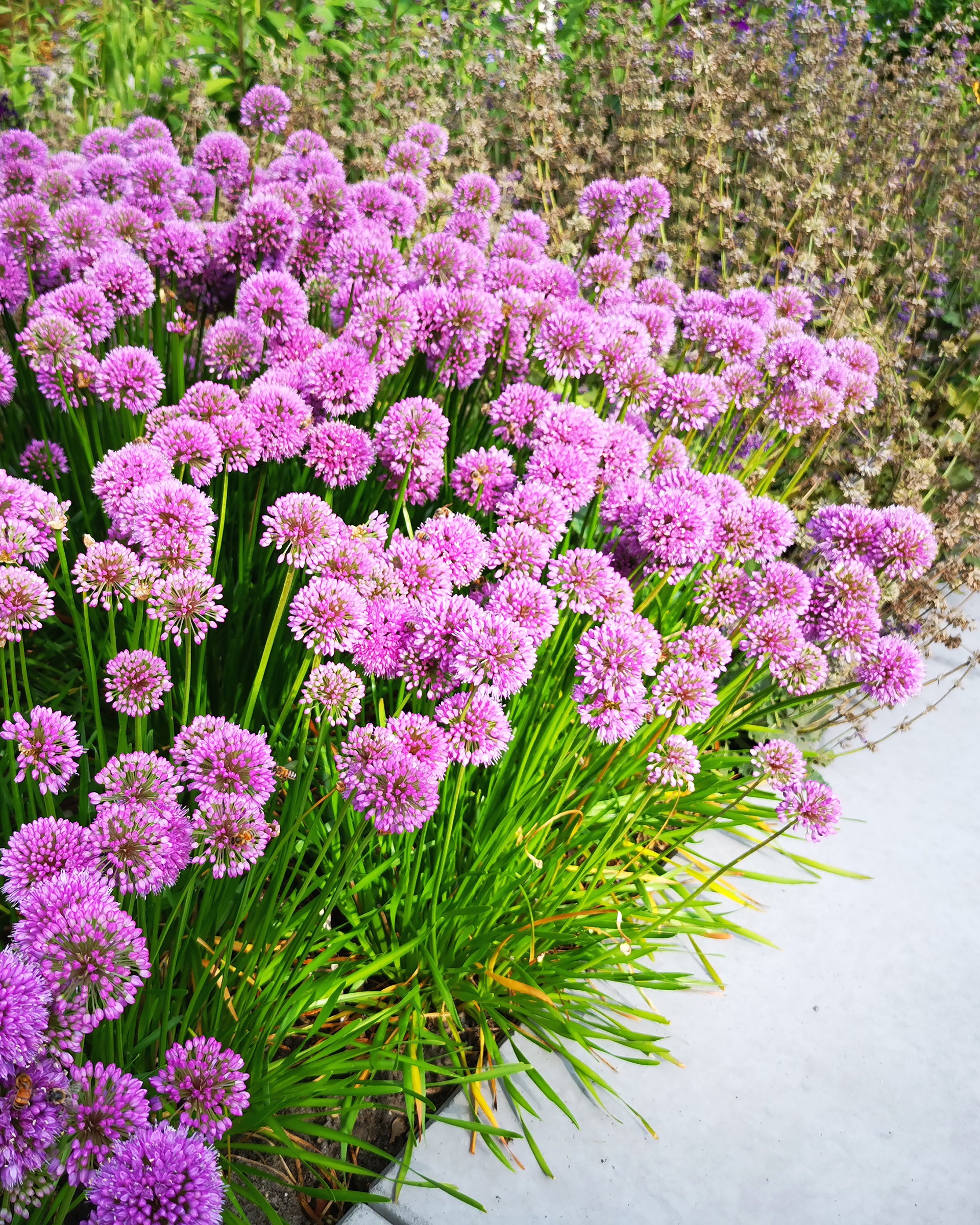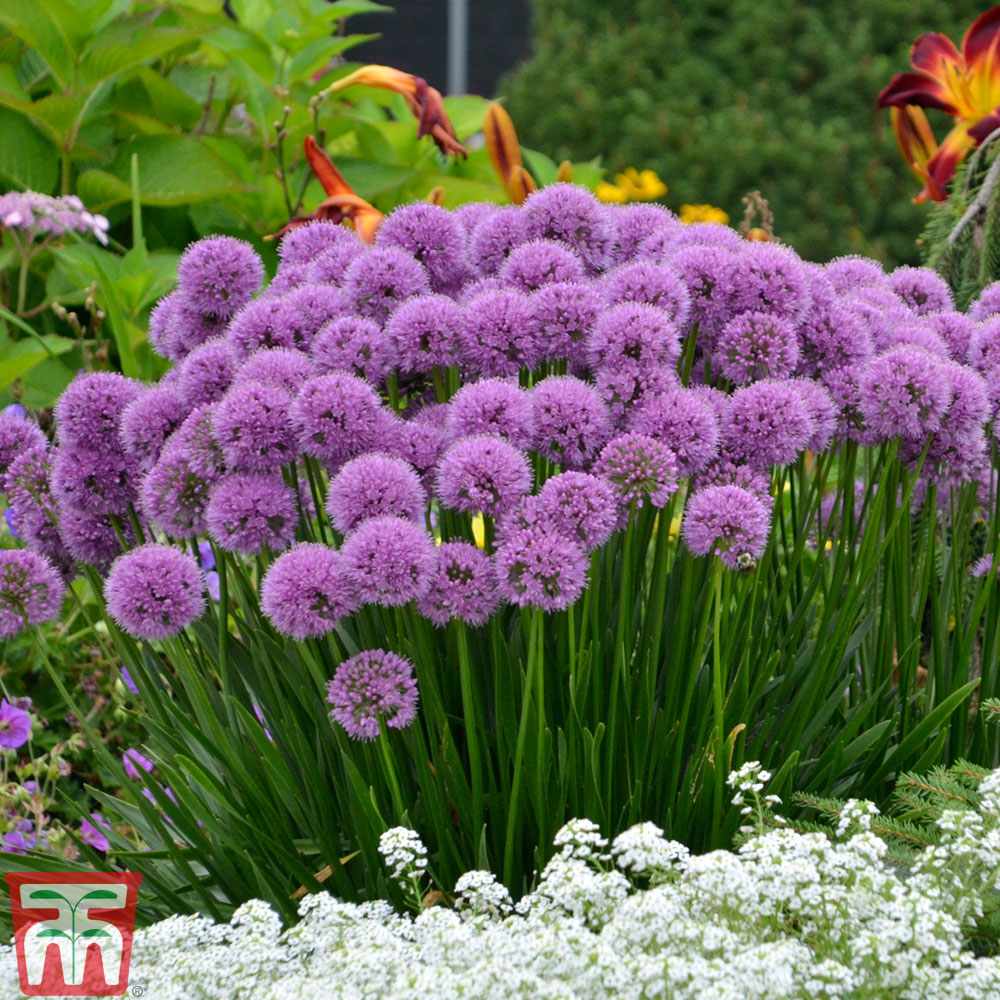“`html
Allium Millenium: A Comprehensive Guide
Allium Millenium: A Comprehensive Guide
Allium Millenium, a relatively recent introduction to the ornamental allium world, has rapidly gained popularity among gardeners for its stunning floral display, robust nature, and ease of cultivation. This article delves into the various aspects of this captivating plant, covering its origins, characteristics, cultivation, care, and uses.
Origins and Taxonomy
Allium Millenium is a hybrid developed by Mark McDonough, a renowned allium breeder. It’s a cross between Allium montanum and Allium karataviense, combining the best traits of both parents. This hybrid was selected for its upright growth, prolific flowering, and clumping habit, making it an excellent choice for borders and mass plantings. The “Millenium” moniker was chosen to reflect its introduction around the turn of the 21st century.
Botanical Characteristics

Allium Millenium is a perennial bulbous plant that forms dense clumps of strap-like, glossy green leaves. The leaves are basal, meaning they emerge from the base of the plant, and remain attractive throughout the growing season. In mid to late summer, sturdy, upright stems rise above the foliage, bearing rounded umbels of vibrant rose-purple flowers. These flower heads are composed of numerous star-shaped florets, creating a visually striking display. The plant typically reaches a height of 15-20 inches (38-50 cm), with a spread of about 12-18 inches (30-45 cm).
Foliage
The leaves of Allium Millenium are a key feature, providing a lush, textural backdrop to the vibrant flowers. They are broad, flat, and slightly recurved, resembling the leaves of some daylilies. This foliage remains green and healthy even after the flowers have faded, offering continued ornamental value.
Flowers
The flowers are undoubtedly the star of the show. The spherical umbels, typically 2-3 inches (5-8 cm) in diameter, are packed with numerous small, star-shaped flowers. The rose-purple hue is rich and saturated, adding a burst of color to the summer garden. The flowers are also highly attractive to pollinators, particularly bees and butterflies.
Bulbs and Roots
Like other alliums, Allium Millenium grows from bulbs. These bulbs are relatively small and form dense clumps over time. The root system is fibrous and well-developed, allowing the plant to establish itself quickly and tolerate a range of soil conditions.
Cultivation and Planting

Allium Millenium is a relatively easy plant to grow, making it suitable for both novice and experienced gardeners. Here’s a guide to successful cultivation:
Planting Time
The best time to plant Allium Millenium bulbs is in the fall, typically September to November. This allows the bulbs to establish roots before winter dormancy. In warmer climates, planting can also be done in early spring.
Site Selection
Allium Millenium prefers a sunny location with well-drained soil. It can tolerate partial shade, but flowering may be less prolific. Good drainage is crucial to prevent bulb rot, especially in heavy clay soils.
Soil Preparation
Before planting, prepare the soil by loosening it and incorporating organic matter, such as compost or well-rotted manure. This will improve soil structure and fertility. If your soil is heavy clay, consider adding grit or sand to enhance drainage.
Planting Depth and Spacing

Plant the bulbs about 2-3 inches (5-8 cm) deep, with the pointed end facing upwards. Space the bulbs about 6-8 inches (15-20 cm) apart to allow for future growth and clumping.
Watering
After planting, water the bulbs thoroughly to settle the soil. Once established, Allium Millenium is relatively drought-tolerant. However, regular watering during dry spells will promote healthy growth and flowering.
Care and Maintenance
Allium Millenium requires minimal maintenance, making it a low-maintenance addition to the garden.
Fertilizing
In spring, apply a balanced fertilizer to promote healthy growth and flowering. A slow-release fertilizer or a liquid feed can be used. Avoid over-fertilizing, as this can lead to excessive foliage growth at the expense of flowers.
Mulching
Apply a layer of mulch around the plants to conserve moisture, suppress weeds, and regulate soil temperature. Organic mulches, such as shredded bark or compost, are ideal.
Deadheading
While not essential, deadheading the spent flowers can prevent seed production and encourage continued blooming. Simply cut off the flower heads as they begin to fade.
Division
Over time, Allium Millenium will form dense clumps. To prevent overcrowding and maintain vigor, divide the clumps every 3-4 years in the fall. Dig up the clumps, separate the bulbs, and replant them at the recommended spacing.
Pest and Disease Resistance
Allium Millenium is generally resistant to pests and diseases. However, like other alliums, it can be susceptible to bulb rot in poorly drained soils. Ensure proper drainage and avoid overwatering to prevent this issue.
Uses in the Garden
Allium Millenium is a versatile plant that can be used in various garden settings.
Borders and Beds
Its upright growth and vibrant flowers make it an excellent choice for adding vertical interest to borders and beds. Plant it in groups or drifts for a stunning visual impact.
Rock Gardens
The compact size and drought tolerance of Allium Millenium make it suitable for rock gardens. It can thrive in the well-drained conditions typically found in these settings.
Container Gardening
Allium Millenium can also be grown in containers, making it ideal for patios and balconies. Use a well-draining potting mix and ensure the containers have drainage holes.
Cut Flowers
The long-lasting flowers of Allium Millenium make excellent cut flowers. They add a touch of elegance to bouquets and arrangements. Cut the stems when the flowers are partially open for the longest vase life.
Pollinator Gardens
The flowers are highly attractive to bees, butterflies, and other pollinators, making Allium Millenium a valuable addition to pollinator gardens.
Mass Plantings
For a dramatic display, plant Allium Millenium in large groups or drifts. The mass of vibrant flowers will create a stunning focal point in the garden.
Companion Plants
Allium Millenium pairs well with a variety of other plants, creating visually appealing and harmonious combinations.
Perennials
Combine it with other summer-blooming perennials, such as Echinacea, Rudbeckia, and Salvia, for a colorful and long-lasting display.
Grasses
Ornamental grasses, such as Calamagrostis and Panicum, provide a contrasting texture and complement the upright form of Allium Millenium.
Ground Covers
Low-growing ground covers, such as Sedum and Thymus, can fill in the spaces around the plants and suppress weeds.
Spring-Blooming Bulbs
Plant Allium Millenium alongside spring-blooming bulbs, such as tulips and daffodils, for a succession of color throughout the growing season.
Propagation
Allium Millenium can be propagated by division or by seed.
Division
Division is the easiest and most reliable method of propagation. Divide the clumps every 3-4 years in the fall, as described in the care and maintenance section.
Seed
Allium Millenium can also be propagated by seed, although it may take several years for the plants to reach flowering size. Sow the seeds in a well-draining seed starting mix in the spring or fall.
Conclusion
Allium Millenium is a remarkable plant that offers a wealth of benefits to gardeners. Its stunning flowers, robust nature, and ease of cultivation make it a valuable addition to any garden. Whether used in borders, rock gardens, containers, or as cut flowers, Allium Millenium will undoubtedly bring joy and beauty to your outdoor space.
“`

:max_bytes(150000):strip_icc()/gerber-daises-4121360-hero-bfd1a98e8bb44c45891b84d9df63b5ac.jpeg?resize=200,135&ssl=1)

